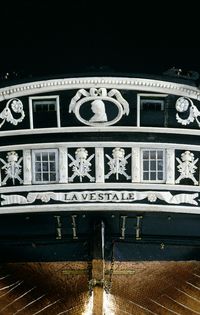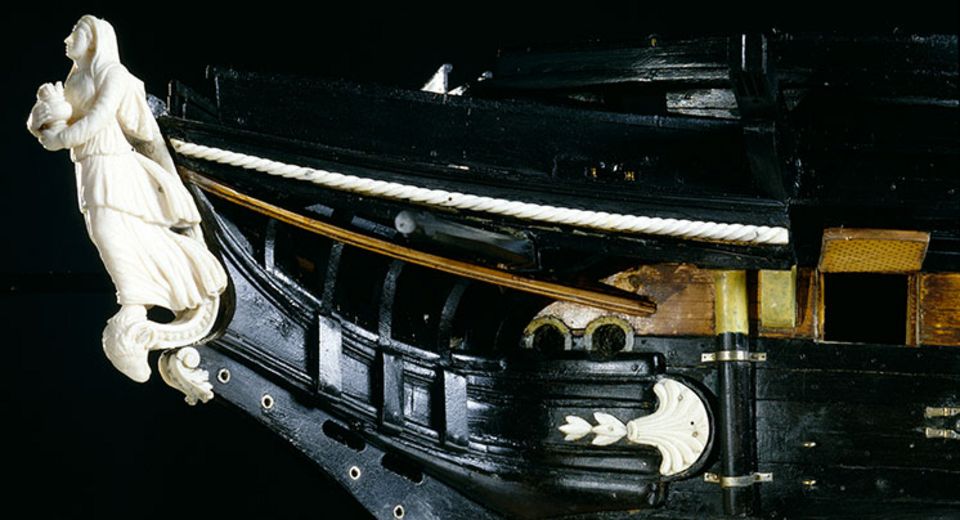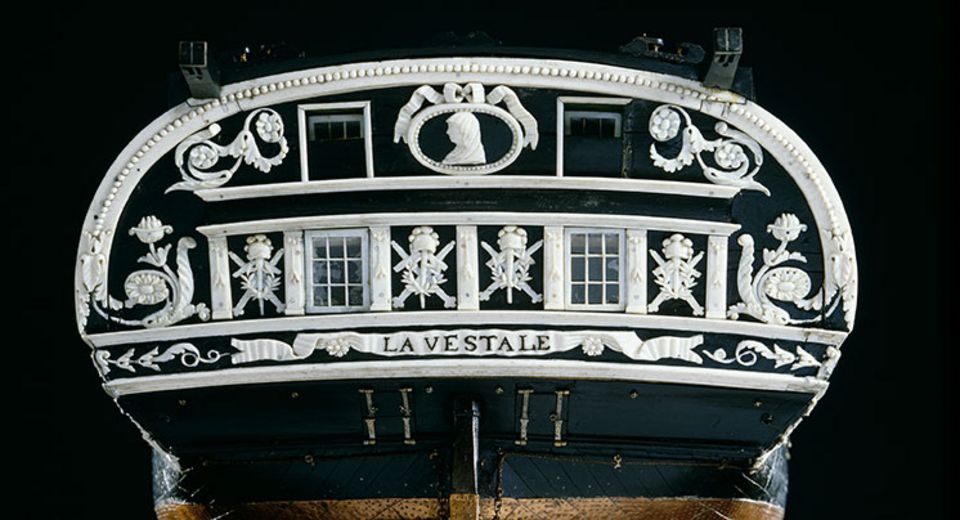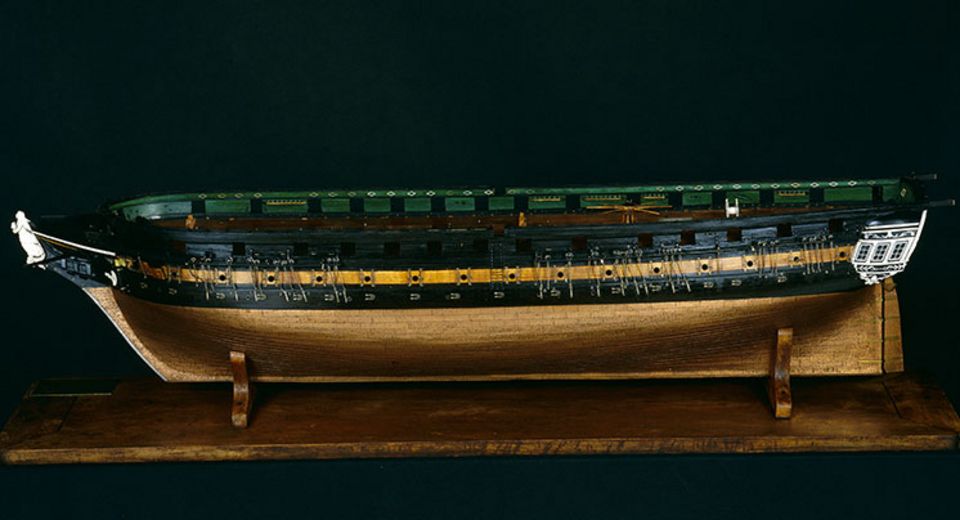The model of La Vestale
Rochefort - Hôtel de Cheusses/Arsenal
These days, the model of La Vestale is a key historical source on construction of frigates, warships that combined speed with firepower. Created in Rochefort’s shipyard and intended for the Naval Museum’s collections in the Louvre, the model also has considerable artistic value.
La Vestale: an example of a frigate
Rochefort’s naval shipyard built 550 ships of various sizes and functions between 1666 and 1927, almost sixty of which were sailing frigates. Less powerful than ships of the line, frigates were fast, light warships. Built between 1820 and 1822, from plans by the engineer Paul Filhon, La Vestale was one such ship, combining speed and firepower. It was a “24-pounder frigate”, i.e. it was provided with cannons most of which fired 24-pound balls.
A model for the Louvre’s naval museum
 Enlarge image : Vestale, frégate de 2e rang
Enlarge image : Vestale, frégate de 2e rang
Ten years after the ship was launched, a model of La Vestale was created in Rochefort as an addition to the collections conserved by the Louvre’s Naval museum. The exactness of its details and its technical accuracy testify to the knowhow of the model-makers, specialised craftsmen who designed scale models of ships and machines in naval shipyards from the late 17th century onwards. Remarkably enough, the model’s upper deck bears a model maker’s s signature: “fecit JB Bezier 1833”.
The model of La Vestale also has considerable artistic value, confirming the notion of prestige associated with such objects, which asserted the greatness of the French Navy. Meticulously sculpted, the transom is decorated with floral motifs and accoutrements connected with war, including swords, helmets and laurel wreaths, evoking the ship’s military function. The decorations on the prow (the front) and the stern (the back) are sculpted in ivory, testifying to the value assigned to the model.
Collection highlight
The essential works to see during your visit to the Musée national de la Marine in Brest, Port-Louis, Rochefort, Toulon, and soon in Paris.



